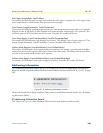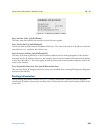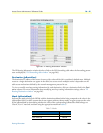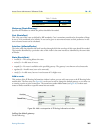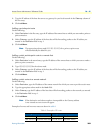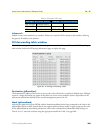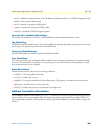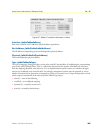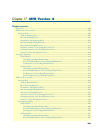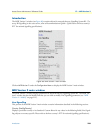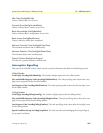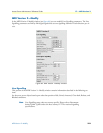
Address Translation Information 206
Access Server Administrators’ Reference Guide 16 • IP
• user(2)—Added by an administrator on the IP Routing Information table or via SNMP management tools.
• dspf(3)—Not currently implemented.
• rip(4)—Learned via reception of RIP packet.
• icmp(5)—Learned via reception of ICMP packet.
• radius(6)—Provided in RADIUS response packet.
Seconds Since Updated (ipRouteAge)
The number of seconds since this route was last updated or otherwise determined to be correct.
Tag (RouteTag)
An identifier associated with the route. This can have different meanings depending on the protocol. For exam-
ple, this gives the tag that was passed with a learned RIP route.
Gateway (RouteGateway)
Specifies the IP address to which the packets should be forwarded.
Cost (RouteCost)
This is the cost of the route as defined by RIP standards. Cost is sometimes considered to be number of hops.
A cost of 16 is considered to be infinite. A cost can be given to user-entered routes so their preference in rela
-
tion to learned routes can be calculated.
State (RouteState)
Defines the state which a route may be in during its lifetime.
• invalid(1)—This setting deletes the route.
• active(2)—A valid route is in use.
• nopath(3)—No route is available to the specified gateway. The gateway is not known to local networks.
• agedout(4)—Invalid route (soon to be removed).
• costly(5)—A valid route, but not in use because of it’s higher cost.
Address Translation Information
The IP address translation table window (see figure 87) contain the IP address to physical address equivalences.
Some interfaces do not use translation tables for determining address equivalences (for example, DDN-X.25
uses an algorithmic method)—if all interfaces are of this type, then the Address Translation table is empty (zero
entries).



